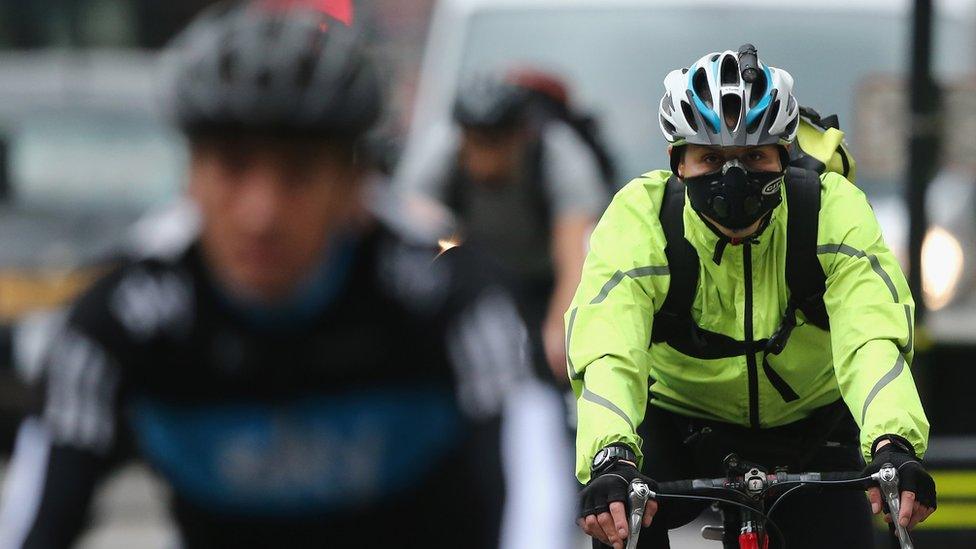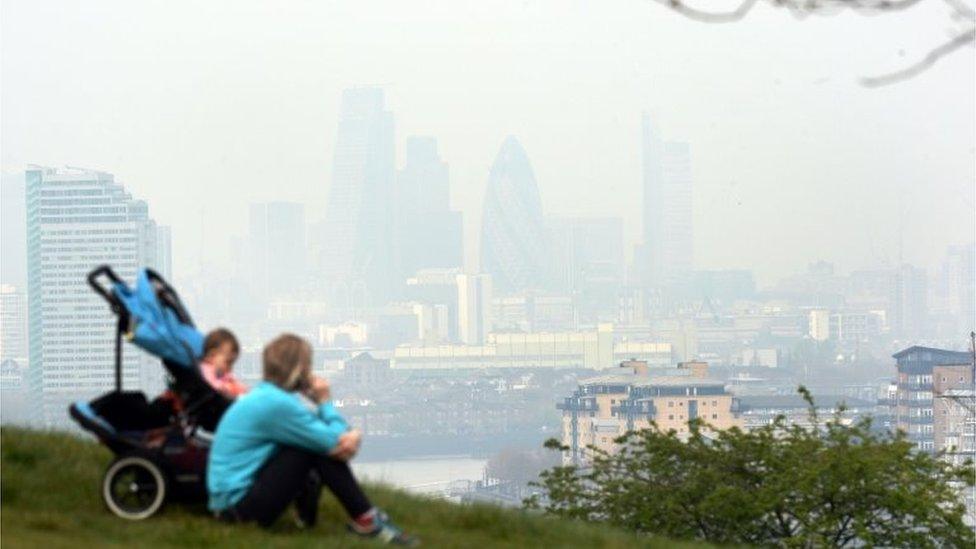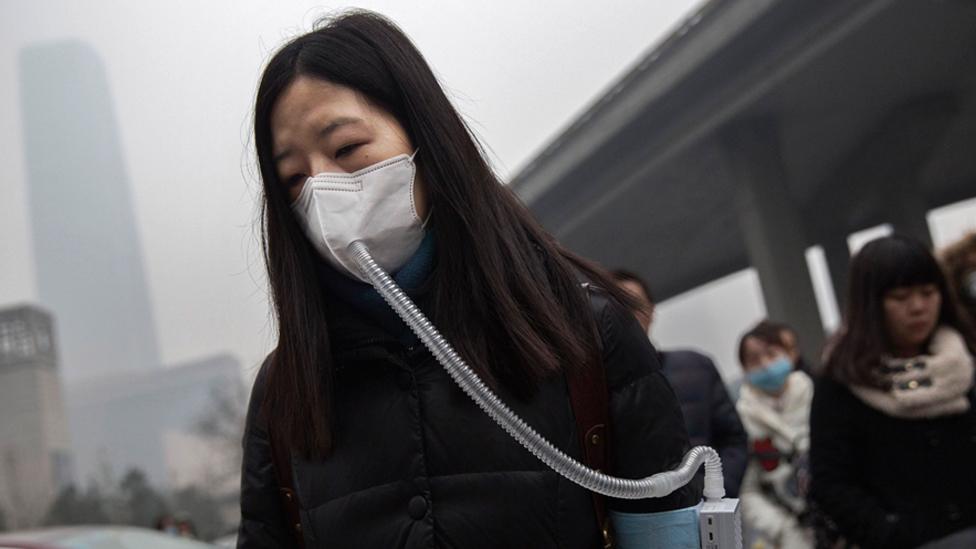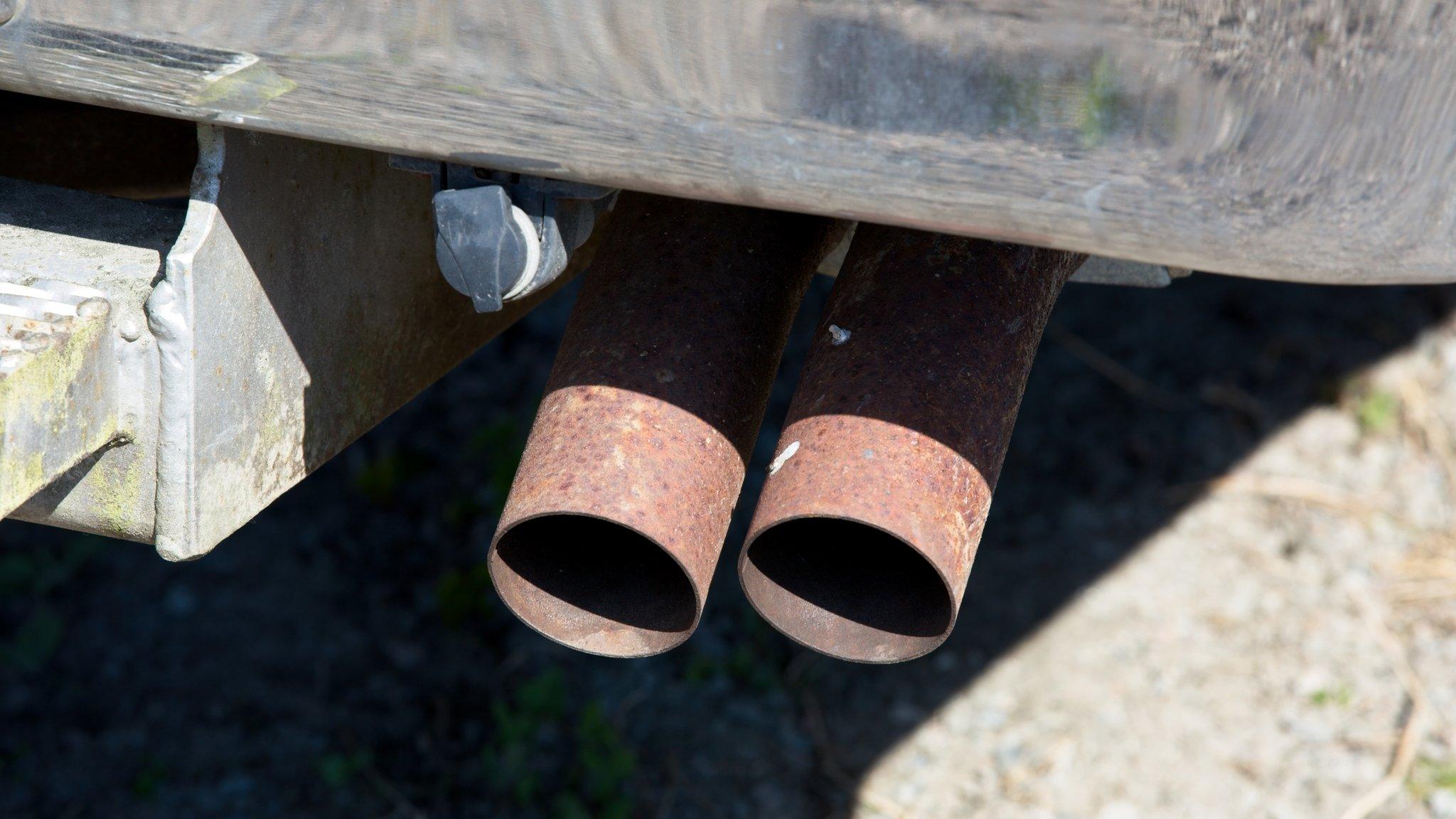Pollution hotspots revealed: Check your area
- Published
- comments

Cyclists wear masks against pollution in London
Marylebone Road and Hyde Park Corner, both in central London, have the most polluted postcodes in Britain, says a new study on air quality.
The data comes from a project to map concentrations of nitrogen dioxide (NO2) across the country.
However, the results also show that large parts of Britain have relatively clean air.
Diesel vehicles are a key source of NO2 gas, which has been linked to respiratory disease.
While this study only concentrates on NO2 pollution, scientists advise that high concentrations of NO2 are generally a good indication that other pollutant types may also be present.
You can see what air quality is like in your area by entering your postcode in the search below. The data represents an average for 2016 and does not include Northern Ireland.
If you cannot view the postcode search, please click here, external to reload the page.
Although dirty air doesn't kill people directly, it's estimated to contribute to shortening the lives of 40,000 people a year in the UK. Pollution is thought to undermine the health of people with heart or lung problems.
A new analysis by the company EarthSense, external shows NO2 concentrations in 100x100m squares across the UK. The company's technical director, Prof Roland Leigh, says it is the most detailed model yet for assessing air quality in Britain.
"By focussing it down we can really isolate the hotspots of poor air quality, and better target our solutions."

Air pollution levels in London could stay above legal limits for the next decade if action isn't taken
Prof Leigh says it's important to be aware of bad pollution levels where you live, or near schools or your route to work, but that no areas in Britain are bad enough that people should avoid exercising outside.
"Air quality is actually getting better in Britain, and we are in a better state than a large number of countries - particularly across Asia.
"In Britain, it's always better to be outside exercising than inside avoiding pollution, even in the worst areas."

Five ways to avoid pollution
Keep away from the busiest roads - pollution concentrates around the heaviest traffic
Use side roads - these are cleaner because there is so much less traffic
Watch out for hotspots of dirty air - engines are often left running in stationary traffic. This can create "urban canyons" of pollution, particularly around traffic lights, so stand back after pushing the button before crossing the road
When walking up a hill always stick to the side where traffic is flowing down the hill, away from the brunt of the fumes. This will always be the cleaner alternative
Basic face-masks are not worth the hassle - these trap dust but little else, while heavy-duty versions are cumbersome. Scientists recommend avoiding busy roads instead

In the study, each area is rated on a scale from 1, least polluted, to 6, most polluted. More than four in five postcodes in Great Britain fall into the least polluted category (1).
The scale is worked out based on a probability that each area will break the annual legal limit for NO2. Areas fall foul if they average more than 40 micrograms of NO2 per cubic metre.
Fewer than 1% of postcodes are rated either 4 or 5, and no postcodes in Great Britain fall into the highest category - six - for areas that average over 100 micrograms of NO2 per cubic metre.
Three-quarters of the postcodes with the worst ratings are in London. Those outside the capital include other built-up areas as well as otherwise rural locations near motorways.

Three-quarters of the postcodes which reach level five out of six are in London
The company has largely based its analysis on traffic emissions, the dominant source of NO2 in the UK.
In many big cities, such as London, safe limits on harmful particulates and nitrogen oxides, including NO2, are regularly breached.
In the last few years, the campaign group ClientEarth has won a number of rulings against the UK government over air pollution. These legal challenges forced ministers to draw up plans to tackle the problem and meet EU targets on NO2.
However, a recent study in the journal Nature Geoscience suggested that targets for reducing NO2 pollution could be achieved more quickly than the government expects. This was because government projections did not take into account that as cars age, they produce less of the harmful gas.
Updated 8 February 2018: This article has been updated to clarify that the EarthSense study on air quality concentrates only on NO2 pollution. Scientists advise that high concentrations of NO2 are generally a good indication that other pollutant types may also be present. Further work is being carried out to cover particulate matter.
In the UK, you can see more on this story and how to combat air pollution on Fighting for Air on BBC Two at 21:00 on Wednesday 10 January and afterwards on iPlayer.
Postcode search produced by Rosie Gollancz, Sumi Senthinathan, Ransome Mpini, Shilpa Saraf, Joe Reed and Daniel Dunford. The company behind the data have produced responses to some FAQs about it here, external.
- Published28 August 2018

- Published3 August 2018

- Published27 June 2018

- Published22 June 2018
